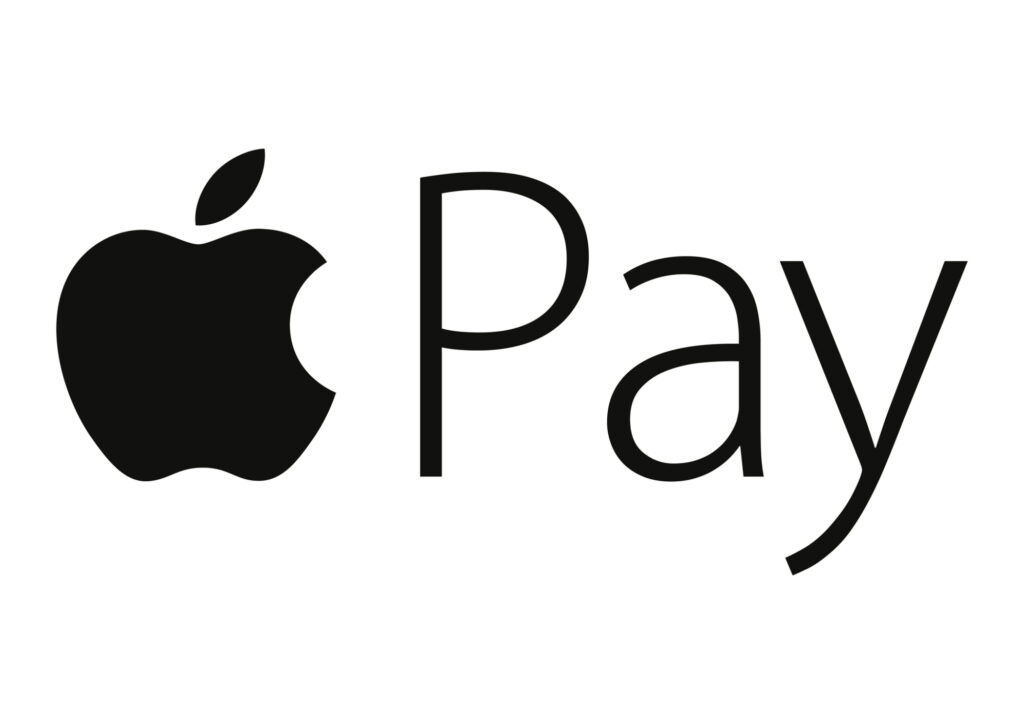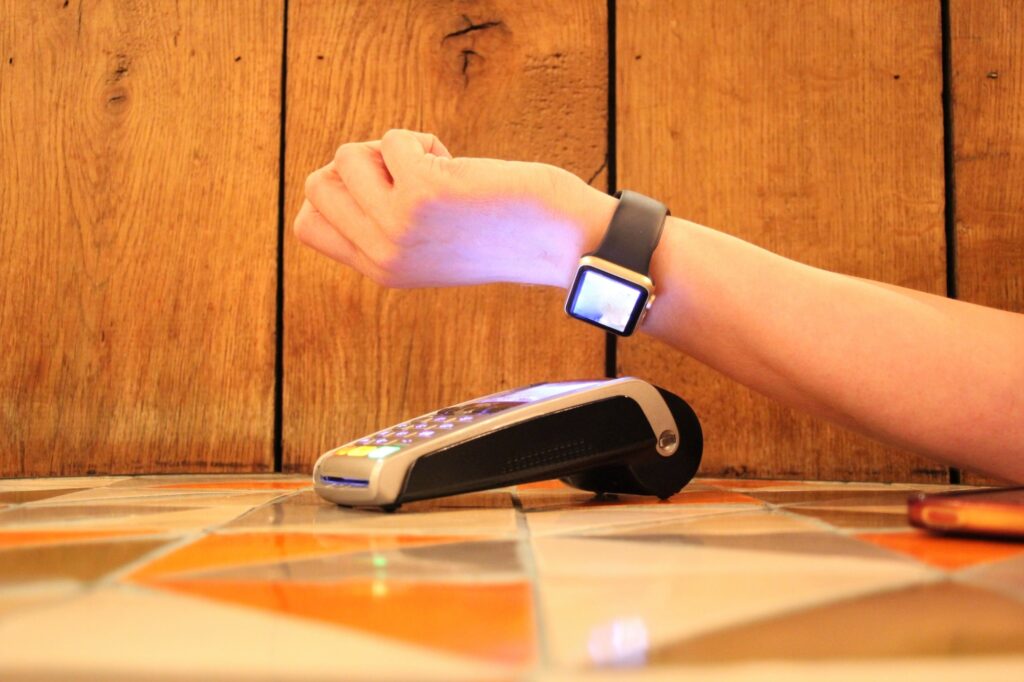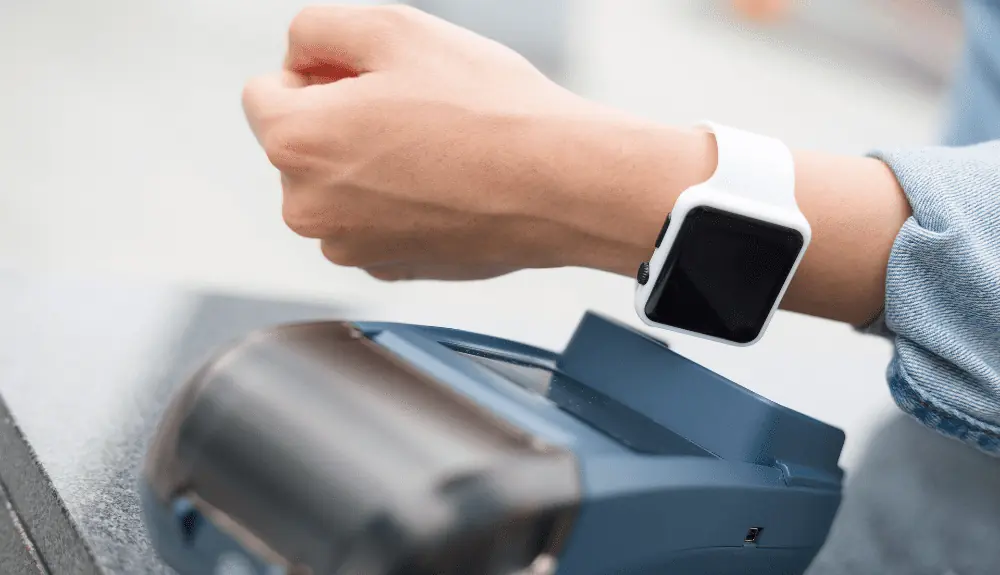Any business owner thrives to offer easy and secure payment methods to their customers while keeping it simple and efficient for their staff. In today’s digital world, customers prefer mobile payment options. One such method is Apple Pay which is becoming increasingly popular. This article will provide an overview of Apple Pay, its benefits, and the steps for small businesses to implement it.
Introduction
With the advent of contactless payment methods, mobile wallets have become the preferred mode of payment for many customers. Offered by Apple, Apple Pay is a fast and easy to use mobile based payment system. It enables customers to make purchases using their iPhones, iPads, or Apple Watches. The app stores their credit card or banking information, allowing them to complete transactions quickly and easily. In this article, we’ll explore what Apple Pay is, how it works, and why small businesses should consider using it.
Apple Pay: A Contactless Payment System by Apple
Apple Pay allows the user to pay through their Apple devices. This mobile based payment system is easy to use. Banking or credit card information is stored in the app and thus the app is able to use it during payment at a restaurant or a store.
A single tap of their device with the reader in the restaurant can make the payment. The app also enables users to make peer-to-peer payments.
Using Apple Pay provides more than just convenience. After the pandemic, contactless payments have become an essential means of maintaining the safety of both customers and employees.
Apple Pay Uses NFC Technology to Secure Transactions

Apple Pay uses NFC or near-field communication to enable secure and convenient transactions between a user’s device and a merchant’s card reader. NFC is used by contactless and mobile payment systems. The process begins when the user taps their phone, iPad or Apple Watch to a compatible reader.
To ensure the safety of users’ financial information, Apple Pay tokenization which is a security process. This process replaces the user’s credit card account number with a randomly generated series of numbers, known as a token.
When a user installs the Apple Pay application, they have the option to capture an image of their credit card using the phone’s camera. This snapshot is then utilized by Apple to establish contact with the user’s bank or credit provider. Subsequently, the sensitive card details are substituted with a token and securely transmitted back to Apple, where it is meticulously stored on the user’s device.
When the user makes a purchase, the app uses the token instead of their actual banking information to process the payment. This method of payment prevents hackers from accessing the user’s credit card details, ensuring that transactions are secure and fraud-free.
With the added convenience of being able to make payments via their mobile device, users can easily pay for goods and services with just a tap of their phone. This technology is not only convenient, but also safe and secure, making Apple Pay an attractive option for consumers and merchants alike.
Benefits and Drawbacks of Accepting Apple Pay for Your Business
Apple Pay provide businesses with faster transaction processing and greater security than traditional payment methods. When it comes to Apple Pay specifically, there are several benefits and drawbacks to consider before deciding whether to accept it as a payment method.
Benefits of Accepting Apple Pay:
Faster Checkout Process: Apple Pay and other mobile payment systems allow for faster transactions compared to traditional payment methods like cash or credit cards.
Extra cover of Security: Apple Pay provides an additional covering of security through its app’s requirement for passcode and/or fingerprint authentication. If a customer’s phone is stolen, the thief would still need to authenticate the payment to use Apple Pay, thus lowering the chances of fraud.
Tokenization: Apple Pay uses a security process called tokenization. This process replaces or changes the credit card account number. It randomly generates numbers to tokenize. Tokenization significantly lowers fraud, making it a safer payment method for both customers and businesses.
Drawbacks of Accepting Apple Pay:
Requires NFC Technology: To accept Apple Pay, a business needs a solution that can process credit cards and support NFC technology. If your current card reader doesn’t support NFC technology, purchasing new hardware will be required.
Limited to Apple Devices: Apple Pay is only available on Apple devices. It means that people will Android phones will still have to use different payment options like Samsung Pay or Google Pay. Businesses that exclusively accept Apple Pay may not be able to cater to a part of their customer base.
Potential Backlogs: Mobile payments can be a reason for backlogs. These happen at the register level. This can happen because of errors made by new users. This can lead to a minor setback for both customers and business staff.
Card Clash Scenarios: A card clash might sometimes occur. Apple Pay and other mobile-based payment solutions can lead to such incidences. This happens sometimes when a shopper accidentally pays twice or sometimes the payment gets stuck due to having multiple NFC-enabled cards on their phone.
Accepting Apple Pay: A Step-by-Step Guide
If you’re a business owner, accepting Apple Pay as a payment method is essential. Here’s how to get started:
Check if your payment terminal supports contactless payments. It is important to verify if your current payment processor has an NFC-enabled payment terminal that supports contactless payments. Without this, you cannot accept Apple Pay. If not, work with your processor. They will help in purchasing and installing the terminal.
Reader installation is the most important step. After you get your card reader, set it up and ensure that it works correctly. Position it in a visible and accessible location at checkout.
Proper training for the staff is a must. Ensure that your staff knows how to accept the payments. They should be comfortable with the process of accepting from customers as well as businesses. Although most interfaces are user-friendly, anyone can learn the process quickly. But, at the same time, your staff needs to practice with the system and know how to use it correctly.
The customer’s device should be near the reader. This is an important step to accept payment. The customer’s device should be near the reader to process the payment. This will connect the reader with the device. A chime sound is produced by the card reader and 4 green lights glow. This means that the payment was successful.
Apple Pay: A Secure and Convenient Payment Option for Businesses and Customers
Mobile payments are becoming increasingly popular among consumers and businesses, thanks to their convenience, speed, and security. With the rise of mobile payment options, businesses need to adapt to this change by offering their customers safe and secure payment options. Apple Pay allows safe and secure transactions by the user using their Apple devices.
One question that often comes up about Apple Pay is whether it is a secure system or there are some security concerns with this payment option. In this article, we will explore the security measures that Apple Pay has in place to protect customers’ banking information and ensure safe transactions.
Apple Pay Keeps Transactions Secure?
Apple Pay uses several security measures to protect users’ banking information and ensure secure transactions. These include:
Tokenization: Apple Pay uses a technology called tokenization to protect users’ credit card information. Tokenization replaces a user’s credit card number with a unique digital token. The token is stored on the user’s device and used to complete transactions instead of the credit card number. This way, even if a hacker gains access to the token, they cannot use it to make fraudulent purchases.
Biometric Authentication: Another security measure used by Apple Pay is biometric authentication. Users can set up Touch ID or Face ID to authenticate payments using their fingerprint or facial recognition. This ensures that only authorized users can make payments using their devices.
Device Security: Apple Pay also benefits from the security features built into Apple devices, including data encryption and the ability to remotely lock or wipe a lost or stolen device. This makes it difficult for thieves to gain access to users’ banking information, even if they have stolen the device.
No Card Numbers Stored: Apple Pay does not store users’ credit card numbers on their devices or Apple’s servers. This reduces the risk of hackers gaining access to sensitive information.
Are There Any Risks to Using Apple Pay?
While Apple Pay is generally considered a safe and secure payment option, there are some risks to using it. The most significant risk is that of physical theft. If a user’s iPhone, iPad, or Apple Watch is stolen, Apple Pay could be used by a thief easily to purchase something. There is no need to enter a passcode nor is any type of biometric authentication required.
What Are the Costs of Using Apple Pay?
For businesses, there is no additional cost to accept Apple Pay. However, if you don’t already have an NFC-enabled payment terminal, you will have to buy one. You should check with your payment processor to see if your current hardware supports Apple Pay. If it doesn’t, you will need to purchase and install a payment terminal that takes contactless payments.
For users, Apple Pay doesn’t charge anything. There are no fees associated with setting up an account or making purchases with it.
Apple Pay Hardware Requirements for Merchants
As more and more customers are switching to digital payments, accepting mobile payments has become a necessary step for businesses to stay competitive in today’s market. Apple Pay is a simple payment solution that allows customers to pay with their Apple devices. If you’re considering accepting Apple Pay at your business, you may be wondering what hardware is required.
Most of the POS (Point of Sale) that uses Google Pay or contactless cc, can also use Apple Pay. Fortunately, if your point-of-sale (POS) terminal already accepts contactless credit cards or Google Pay, you’re likely capable of accepting Apple Pay already. This means you won’t need any additional hardware to start accepting payments through Apple Pay.
However, if your current hardware doesn’t support contactless payments, you’ll need to upgrade to an NFC-enabled terminal. NFC, or near-field communication, is a technology that allows devices to communicate with each other wirelessly over a short distance. Apple Pay uses NFC to transmit payment information from a customer’s iPhone, Apple Watch, or other Apple device to the merchant’s POS terminal. Your payment processor can help you in setting up the system to use Apple Pay
If you do need to purchase a new card reader, there are several options available that support Apple Pay. One popular choice is the Square contactless and chip card reader, which is compatible with both iOS and Android devices. Other options include the Ingenico iCMP or the Verifone VX 520.
It’s important to note that not all NFC-enabled terminals are created equal. Some may not be compatible with certain types of Apple devices, or they may not have the necessary security features to ensure safe and secure transactions. Make sure to choose a terminal that is certified by Apple and meets their security requirements.
In addition to hardware requirements, there are also software requirements for accepting Apple Pay. You’ll need to ensure that your POS software is compatible with Apple Pay and that it can process NFC payments. Many POS systems already support Apple Pay, but if yours doesn’t, you may need to upgrade to a newer version or switch to a different system altogether.
Apple Pay Competitors: Who Are They?
Mobile payment solutions have become a trend in recent years. One of the most popular and trusted payment platforms is Apple Pay. However, it’s worth knowing the competitors of Apple Pay. Samsung Pay and Google Pay are two competitors against Apple Pay.
Paypal and Venmo are two other competitors that are widely used. These systems allow contactless purchases even at brick-and-mortar types of locations. However, their process has a drawback of scanning a QR code to initiate the payment.
Ultimately, the choice of which mobile payment solution to use depends on the user’s preferences, device compatibility, and the merchant’s payment processing capabilities.
Top Alternatives to Apple Pay for Mobile Payments
Apple Pay has become a popular mobile payment solution for iPhone and Apple Watch users, but it’s not the only option available. Samsung Pay and Google Pay are two of the biggest competitors in the mobile payments space. Samsung Pay is designed for Samsung devices, while Google Pay is primarily intended for Android devices. Both of these options use the same contactless technology as Apple Pay and can be used at any point-of-sale terminal that accepts contactless payments.
In addition to Samsung Pay and Google Pay, PayPal, and Venmo are other potential alternatives to Apple Pay. Both of these payment applications allow users to pay for purchases at brick-and-mortar stores through their respective apps. However, unlike Apple Pay, Venmo and PayPal require an additional checkout system that scans QR codes.
Ultimately, the choice between Apple Pay and its competitors comes down to personal preference and which platform is most convenient for the user. Some users may prefer Apple Pay’s seamless integration with other Apple devices, while others may prefer Samsung Pay’s compatibility with Samsung devices. Google Pay’s integration with other Google services may be appealing to some users, while PayPal and Venmo’s popularity for online transactions may make them more attractive to others.
No matter which mobile payment solution you choose, it’s important to consider the security features of each platform before making a decision. While all of these options offer secure transactions, it’s important to ensure that your sensitive information is protected while using mobile payments.
The Impact of Apple Pay: A Modern and Secure Payment Option
Apple Pay has become a popular payment method with over 507 million users globally, as reported by Statista. With an increasing trend towards mobile payment apps, Apple Pay provides a modern, secure, efficient, and hygienic way to make payments, particularly in the post-COVID world. Although there are some minor drawbacks associated with Apple Pay, these are not unique to the platform but rather apply to mobile payment technologies in general.
Businesses can benefit from Apple Pay’s quick and frictionless payment processing, providing a better experience for customers. Accepting Apple Pay can also help establish a modern and up-to-date image for the business.
Conclusion
While Apple Pay may seem like just another payment option, it offers many benefits for small businesses, including convenience, security, and a modern image. Although there are some fees associated with accepting Apple Pay, they are relatively small compared to the advantages it brings. By following the tips provided in this article, small business owners can easily set up and start accepting Apple Pay, providing their customers with a seamless payment experience. As technology continues to advance, businesses need to stay up to date with the latest payment options, and Apple Pay is a valuable tool for doing just that.


